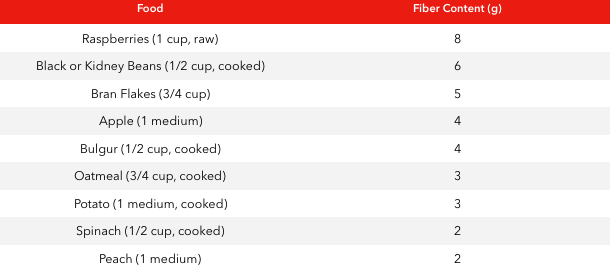Beginner's Guide to Fiber
There are lots of reasons that you’re hearing “eat more plants” these days.Plant foods like fruit, vegetables, whole grains, beans, lentils, nuts, and seeds are not only loaded with phytochemicals, vitamins, and minerals to fight disease, but they’re also great sources of fiber.Fiber is a type of carbohydrate that's found in plants. It will be included on a food label as part of the total carbohydrate along with added sugar. Sadly, most of us don’t meet our fiber needs, which are 25 to 35 grams of fiber per day. A diet high in fiber has been linked to a reduction of obesity, heart disease, and cancer as well as a lower risk of diabetes.Fiber comes in two varieties -- soluble and insoluble. Soluble fiber is the type of fiber found in oatmeal, barley, beans, and the flesh of fruit. This type of fiber dissolves in water and has been found to lower cholesterol and blood sugar and help to curb appetite.Insoluble fiber does not dissolve in water and is found in foods such as wheat, rye and other grains as well as in the skins of fruits and vegetables. This type of fiber is beneficial for promoting laxation/regularity and curbing appetite.Fiber supplements are also available for people who struggle to meet their fiber needs. These supplements typically contain psyllium, methylcellulose, wheat dextrin, and calcium polycarbohphil. What’s important to note is that fiber attracts water. When you add more fiber to your diet, you must also drink more fluids to prevent constipation. Six to eight cups of plain water per day is a good place to start.If you have not been consuming much fiber in your diet, it’s important to add it gradually to prevent discomfort. For example, switch from white bread to 100% whole wheat bread or white rice to brown rice. Add an extra piece of fruit or serving of vegetable daily for a week, then add more the following week. Including dried beans or peas in salad or grain dishes is another way to sneak in more fiber in your diet.The list below gives you an idea of which foods contain the most dietary fiber... By Lisa Andrews, MEd, RD, LDPDF Handout: Fiber Handout
By Lisa Andrews, MEd, RD, LDPDF Handout: Fiber Handout


